These are the most extreme snakes on the planet.
1. King Cobra
The King Cobra (Ophiophagus hannah) is the world's longest venomous snake, with a length up to 5.6 m (18.5 ft). This species is widespread throughout Southeast Asia and parts of India, and is found mostly in forested areas. The King Cobra is fierce, agile, and can deliver a large quantity of highly potent venom in a single bite. It is one of the most dangerous and feared Asiatic snakes.
Venom: The venom of King Cobra is primarily neurotoxic but also contains cardiotoxic compounds. It is composed mostly of proteins and polypeptides. During a bite, venom is forced through the snake's half-inch (1.25 cm) fangs and into the wound, and quickly attacks the victim's central nervous system and induces severe pain, blurred vision, vertigo, drowsiness, and paralysis. Envenomation progresses to cardiovascular collapse, and the victim falls into a coma. Death soon follows due to respiratory failure.
2. Inland Taipan
The Inland Taipan (Oxyuranus microlepidotus), also known as the Small Scaled Snake and Fierce Snake, is native to Australia and is the most venomous land snake on Earth. It is a species of taipan belonging to the Elapidae family. Although highly venomous, it is very shy and reclusive, and prefers to escape from trouble, biting only if threatened.
Venom: The inland taipan injects 44 mg of venom with each bite on average, and may inject as much as 110 mg at a time. The median lethal dose (LD50) is 0.03 mg.[4] Its venom is two-hundred to four-hundred times as toxic as that of most rattlesnakes, and fifty times as toxic as that of a cobra. Its venom is a neruotoxin that could potentially kill an adult human in forty-five minutes. All reported bite victims have been treated with antivenom, and there have been no documented fatalities. s of late 2003, all positively identified inland taipan bite victims have been herpetologists handling the snakes for study, although there have been many unverified reports of bites likely caused by the species.
3. Black Mamba
The Black mamba (Dendroaspis polylepis) is the longest venomous snake in Africa, averaging around 2.5 meters (8.2 ft), and sometimes growing up to 4.3 meters (14 ft). Apart from being considered as one of the world's deadliest snakes, the Black mamba is also one of the most feared snakes in Africa due to its potent venom, large size, and the ferocity of its attacks. Its name is derived from the black coloration inside the mouth; the actual color of the skin varies, from dull yellowish-green to a gun-metal gray. It is one of the fastest snakes in the world, capable of moving at 4.5 to 5.4 meters per second (16–20 km/h, 10–12 mph).
Venom: The venom of the Black mamba consists mainly of neurotoxins with a LD50 of 0.25 mg/kg. Its bite delivers about 100–120 mg of venom on average; however, it can deliver up to 400 mg. The mortality rate is nearly 100%, unless the snakebite victim is promptly treated with antivenom. Black mamba bites can potentially kill a human within 20 minutes, but death usually occurs after 30–60 minutes, sometimes taking up to three hours (depending on the health, size, age, psychological state of the human, the penetration of one or both fangs from the snake, amount of venom injected, location of the bite, and proximity to major blood vessels. The health of the snake and the interval since it last used its venom mechanism is also important). Nowadays, there is a polyvalent antivenom produced by SAMIR (South African Institute of Medical Research) to treat all Black mamba bites from different localities.
4. Sea Snake
Sea snakes are venomous elapid snakes that inhabit marine environments for most or all of their lives. Though they evolved from terrestrial ancestors, most are extensively adapted to a fully aquatic life and are unable to even move on land, except for the genus Laticauda, which retain ancestral characteristics which allow limited land movement. They are found in warm coastal waters from the Indian Ocean to the Pacific. All have paddle-like tails and many have laterally compressed bodies that give them an eel-like appearance. However, unlike fish, they do not have gills and must come to the surface regularly to breathe. Nevertheless, they are among the most completely aquatic of all air-breathing vertebrates.
Venom: The majority of sea snakes are highly venomous; however, when bites occur, it is rare for much venom to be injected, so that envenomation symptoms usually seem non-existent or trivial. Bites in which envenomation does occur are usually painless and may not even be noticed when contact is made. Teeth may be left in the wound. There is usually little or no swelling involved and it is rare for any nearby lymph nodes to be affected. The most important symptoms are rhabdomyolysis (rapid breakdown of skeletal muscle tissue) and paralysis. Early symptoms include headache, a thick-feeling tongue, thirst, sweating, and vomiting.
Symptoms that can occur after 30 minutes to several hours post-bite include generalized aching, stiffness, and tenderness of muscles all over the body. Passive stretching of the muscles is also painful, and trismus, which is similar to tetanus, is common. This is followed later on by symptoms typical of other elapid envenomations: a progressive flaccid paralysis, starting with ptosis and paralysis of voluntary muscles. Paralysis of muscles involved in swallowing and respiration can be fatal. After 3–8 hours, myoglobin as a result of muscle breakdown may start to show up in the blood plasma, which can cause the urine to turn a dark reddish, brown, or black color, and eventually lead to acute renal failure. After 6 to 12 hours, severe hyperkalemia, also the result of muscle breakdown, can lead to cardiac arrest.
5. Tiger Snake
Tiger snakes are a type of venomous serpent found in southern regions of Australia, including its coastal islands and Tasmania. These snakes are highly variable in their colour, often banded like those on a tiger, and forms in their regional occurrences. All populations are in the genus Notechis.
Venom: Tiger snakes possess a potent neurotoxin (notexin), coagulants, haemolysins and myotoxins, and rank amongst the deadliest snakes in the world. Symptoms of a bite include localized pain in the foot and neck region, tingling, numbness, and sweating, followed by a fairly rapid onset of breathing difficulties and paralysis. While antivenom is effective, mortality rate for this species is over 60% if not treated. The Pressure Immobilization Method (PIM) is used to inhibit the flow of venom through the lymphatic system. Broad thick bandages are applied over the bite, then down and back along the limb to the armpit or groin. The affected limb is then immobilized with a splint. Identification of the venom is possible if traces are left near the wound. You do not need to identify the snake if bitten in Tasmania, however, as the same antivenom is used to treat all Tasmanian snakes' bites.
6. Burmese Python
The Burmese Python (Python molurus bivittatus) is the largest subspecies of the Indian Python and one of the 6 largest snakes in the world, native to a large variation of tropic and subtropic areas of Southern- and Southeast Asia. They are often found near water and are sometimes semi-aquatic, but can also be found in trees. Wild individuals average 3.7 metres (12 ft) long, but may reach up to 5.8 metres (19 ft).
Venom: Burmese pythons are constrictors, and they have been known to kill people. The burmese python is not a venomous snake. They instead rely on their massive size, and the ability to squeeze the life out of their prey. They latch on with rows of backwards teeth, and wrap up. They then squeeze gradually harder until the prey is suffocated. This danger is real in particular for kids, elderly, and smaller humans. Even large humans have fallen prey to the burmese python.
7. Copperhead
Copperhead (Agkistrodon contortrix mokasen) is a venomous pitviper subspecies found in the eastern United States.
Venom: These snakes are generally quiet, almost lethargic, preferring to lie motionless or to make a slow retreat when encountered. When sufficiently agitated, however, they can strike vigorously and may vibrate their tails rapidly.
8. Rattlesnake
Rattlesnakes are a group of venomous snakes, genera Crotalus and Sistrurus. They belong to the subfamily of venomous snakes known as Crotalinae (pit vipers).
Venom: Most species of rattlesnakes have hemotoxic venom, destroying tissue, degenerating organs and causing coagulopathy (disrupted blood clotting). Some degree of permanent scarring is very likely in the event of a venomous bite, even with prompt, effective treatment, and a severe envenomation, combined with delayed or ineffective treatment, can lead to the loss of a limb or death. Thus, a rattlesnake bite is always a potentially fatal injury. Untreated rattlesnake bites, especially from larger species, are very often fatal. However, antivenom, when applied in time, reduces the death rate to less than 4%. It is estimated that between 7,000 and 8,000 people are bitten by venomous snakes in the United States each year, and about five of those die. About 72% of those bitten by rattlesnakes are male.
9. Rhinoceros Viper (Bitis nasicornis)
Bitis nasicornis is a venomous viper species found in the forests of West and Central Africa. A big viper known for its striking color pattern and prominent horns on its nose. No subspecies are recognized.
Venom: Relatively little is known about the toxicity and composition of the venom. In mice, the intravenous LD50 is 1.1 mg/kg. The venom is supposedly slightly less toxic than those of B. arietans and B. gabonica. The maximum wet venom yield is 200 mg. Because of its restricted range, few bites have been reported.
10. Anaconda
Anacondas are large, nonvenomous boas of the genus Eunectes. They are found in tropical South America. The most familiar species is the green anaconda, "Eunectes murinus", notable for being one of the world's largest snakes. Green anacondas can grow to be 521 cm (17 ft) in length and weighing 97.5 kg (215 lb). They are found east of the Andes in Colombia, Venezuela, the Guianas, Ecuador, Peru, Bolivia, Brazil, and on the island of Trinidad.
Other anacondas are the yellow anaconda, Eunectes notaeus, a smaller species found in eastern Bolivia, southern Brazil, Paraguay and northeastern Argentina; and the dark-spotted anaconda, "Eunectes deschauenseei", a rare species found in northeastern Brazil, coastal French Guiana and Guyana.
All three species are aquatic snakes that prey on other aquatic animals, including fish, river fowl, caiman, and capybaras. Some accounts exist of anacondas preying on domestic animals such as goats and ponies that venture too close to the water.
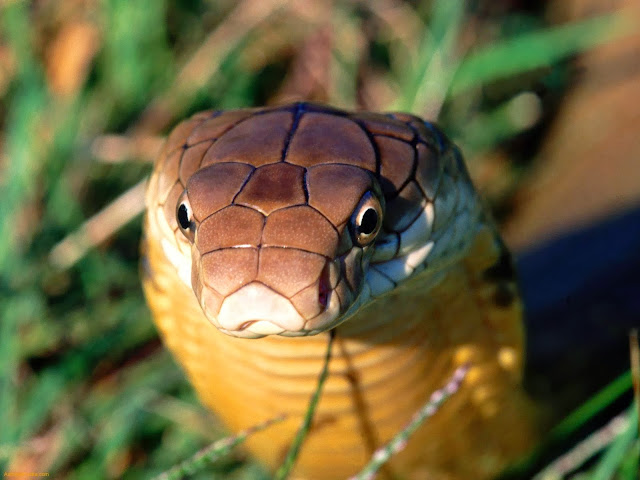
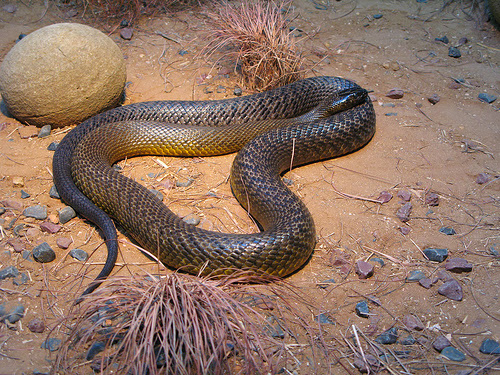
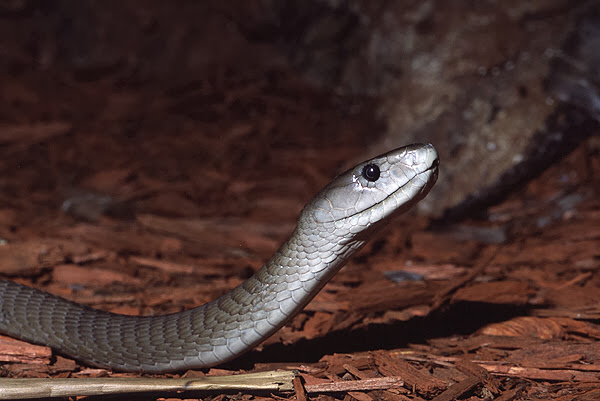
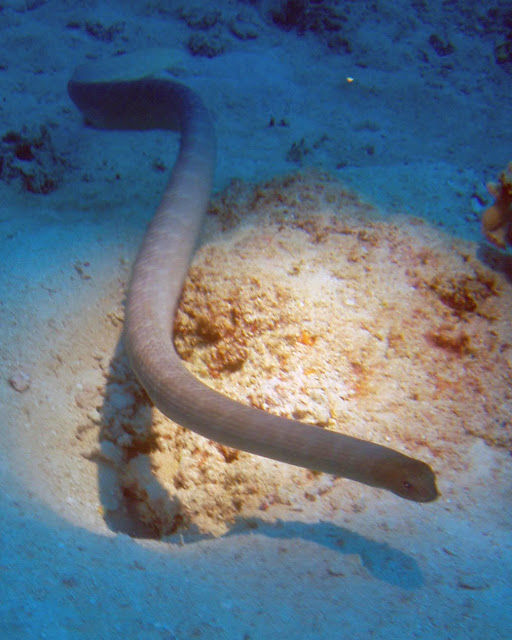
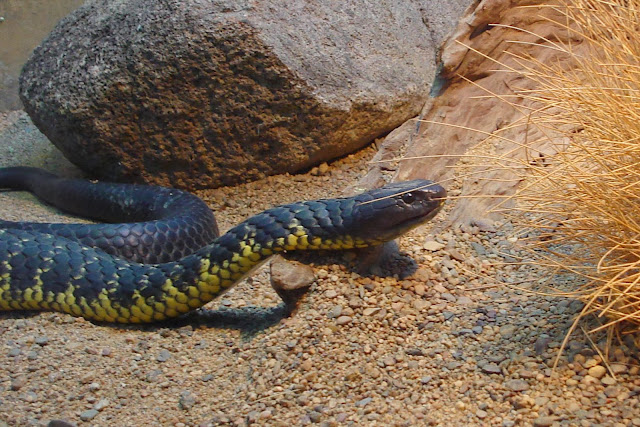
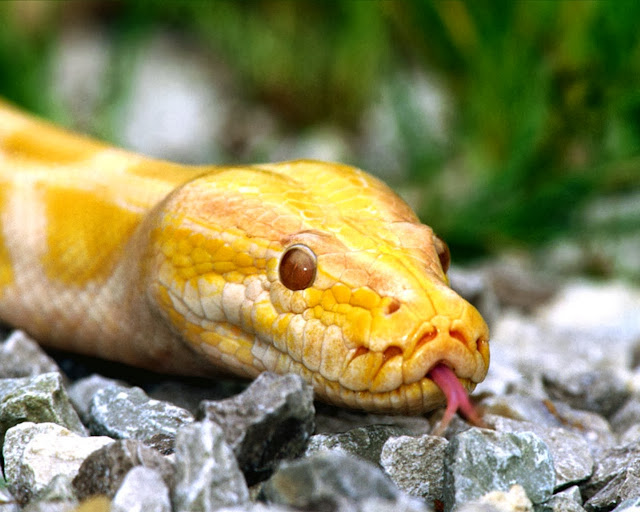


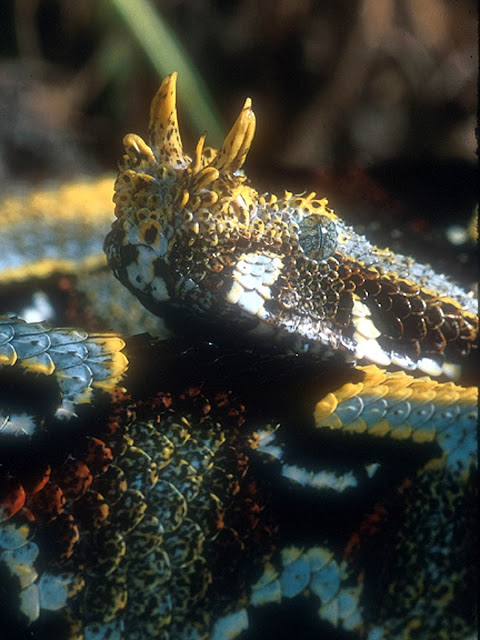
No comments:
Post a Comment